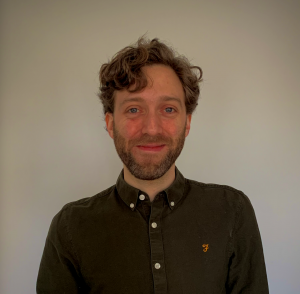In this interview as part of the Early Career Innovators series, recognising the amazing translational work being done by postdocs and non-tenured researchers at University College London (UCL), Dr Mikaël Simard highlights his Devices & Diagnostics Therapeutic Innovation Network (TIN) Pilot Data Fund awarded project, involving the development of a prototype low-cost imaging system for lung proton therapy.
What is the title of your project and what does it involve?
The title of my project is “A proton radiography system towards real-time imaging guidance for lung proton therapy”. It involves the development of a prototype low-cost imaging system, including the hardware and the reconstruction algorithm, for proton therapy.
What is the motivation behind your project/therapeutic?
In the UK, there are about 40000 people each year that are diagnosed with non-small cell lung cancer, which has an extremely poor prognosis. Fortunately, there is a novel radiotherapy modality, proton therapy, that has the potential of improving outcomes for some patients with this type of cancer.. Proton therapy is rapidly developing worldwide; there is now a proton centre at UCL’s Hospitals.
Unfortunately, the drawback with proton therapy is that it is more sensitive to motion. In the case of lung cancer, breathing increases treatment uncertainties, and the potential benefits of proton therapy cannot be reached. A main solution to solve that is real-time image guidance during treatment. This can be achieved with a device that tracks the tumour during treatment and adapts treatment accordingly. The device we propose is a fully integrated imaging device which will provide real-time radiographs for image guidance. It will also serve a variety of clinical needs beyond tracking, such as patient positioning.
Why did you want to apply to the Devices & Diagnostics TIN Pilot Data Fund?
There are two main reasons. First, the TIN pilot data fund is perfectly adapted for the proposed device. The concept of the device has been thoroughly validated in a theoretical/simulation framework, and we have started building the device with limited means. The TIN fund provides a unique opportunity to rapidly complete our prototype.
Second, the TIN call is also a moment to take a step back from the algorithmic development and think about the project in a broader scale, and it felt important to take the time to do this exercise. For instance, you must consider how many people may benefit from the device, you must clearly quantify what the expected benefits may be and consider potential commercial partners for the device.
How did you find the process for the TIN Pilot Data Fund?
Overall, the scheme is extremely helpful for early career researchers to learn more about the translational research process. Coming from a physics PhD and having mostly worked on fundamental developments in medical imaging, it helped me becoming more aware of the translational process, and to think about the potential impact of what we are working on.
During the process, especially the Dragon’s den event, I learned how to focus on the relevant information for investors. I also participated to a pitch training event organised by the Academic Careers Office (ACO) – this was a fun and enlightening event, as it helped to put into perspective the presentation skills that you have developed throughout a PhD.
What do you hope to achieve in the 6 months duration of your project?
Hopefully complete our prototype device and reconstruct high-quality radiographs! My aim is to demonstrate that we can quickly acquire and reconstruct proton radiographs, and that the entire process is fast enough to be compatible with real-time imaging.
What are your next steps from now?
There’s a lot going on right now – on the science side, we are completing the device, and are doing initial measurements at UCL Hospitals. We have some measurable signal, and the next step will be to reconstruct simple objects. This is when we’ll see if the theory matches the experimental measurements, and where we’ll have to make adjustments to maximize the device’s performance.
On the translational side, we are engaging with key partners along the translational pathway; this will ensure that our device is suitable for clinical needs, and this helps us build a solid interdisciplinary team to secure future funding for the next steps of the project.

About Dr Mikaël Simard
Dr Mikaël Simard is a Marie-Curie postdoctoral research fellow in the department of Medical Physics and Biomedical Engineering at UCL, since September 2021. His main research topic is the development of novel image reconstruction algorithms for applications in radiotherapy. He mostly works on novel imaging modalities, currently investigating proton radiography. His previous work focused on quantitative medical imaging.
He completed a M.Sc. at McGill University in 2016 on the topic of magnetization transfer with magnetic resonance imaging, and more recently concluded his PhD in 2020 at the University of Montreal, working on spectral photon-counting computed tomography methods for radiotherapy.
 Close
Close



